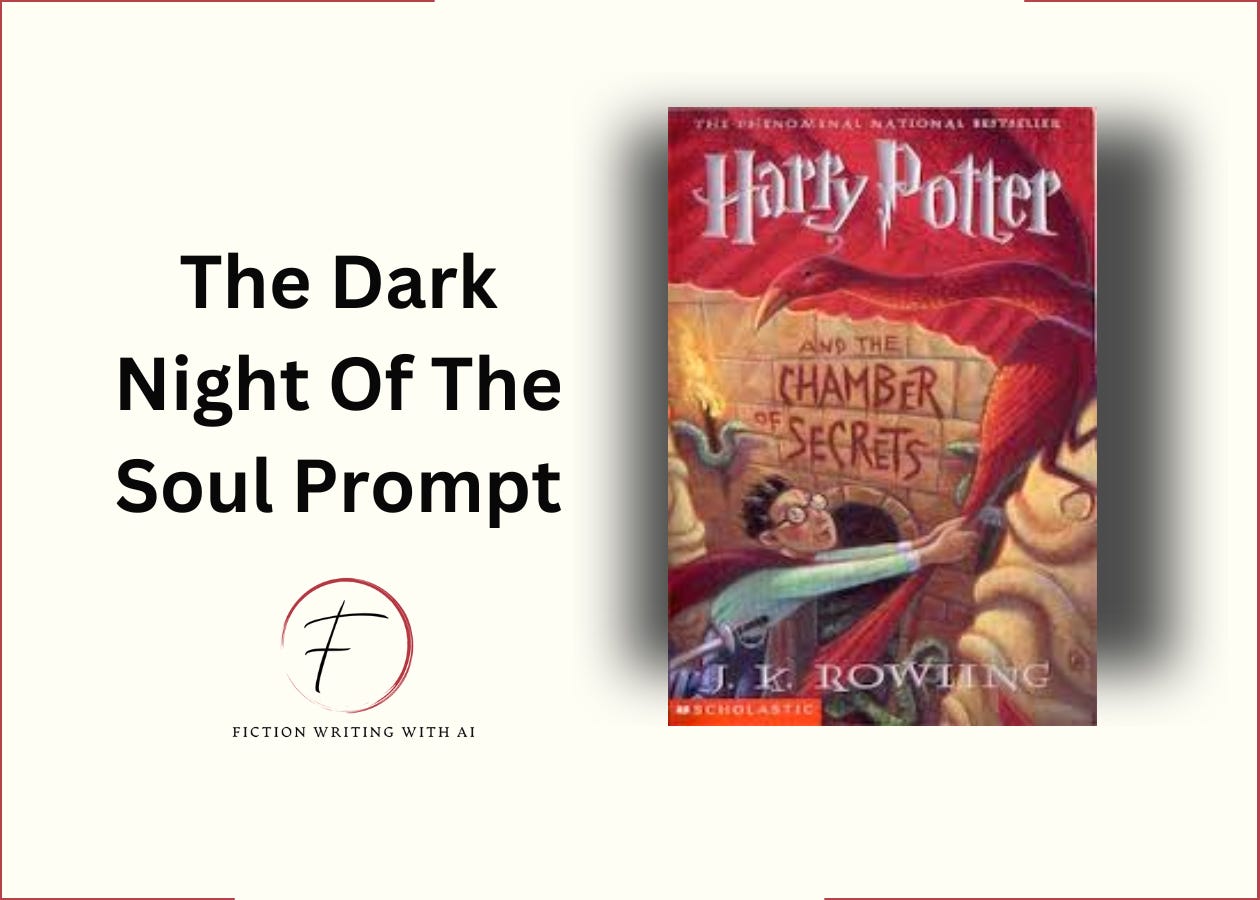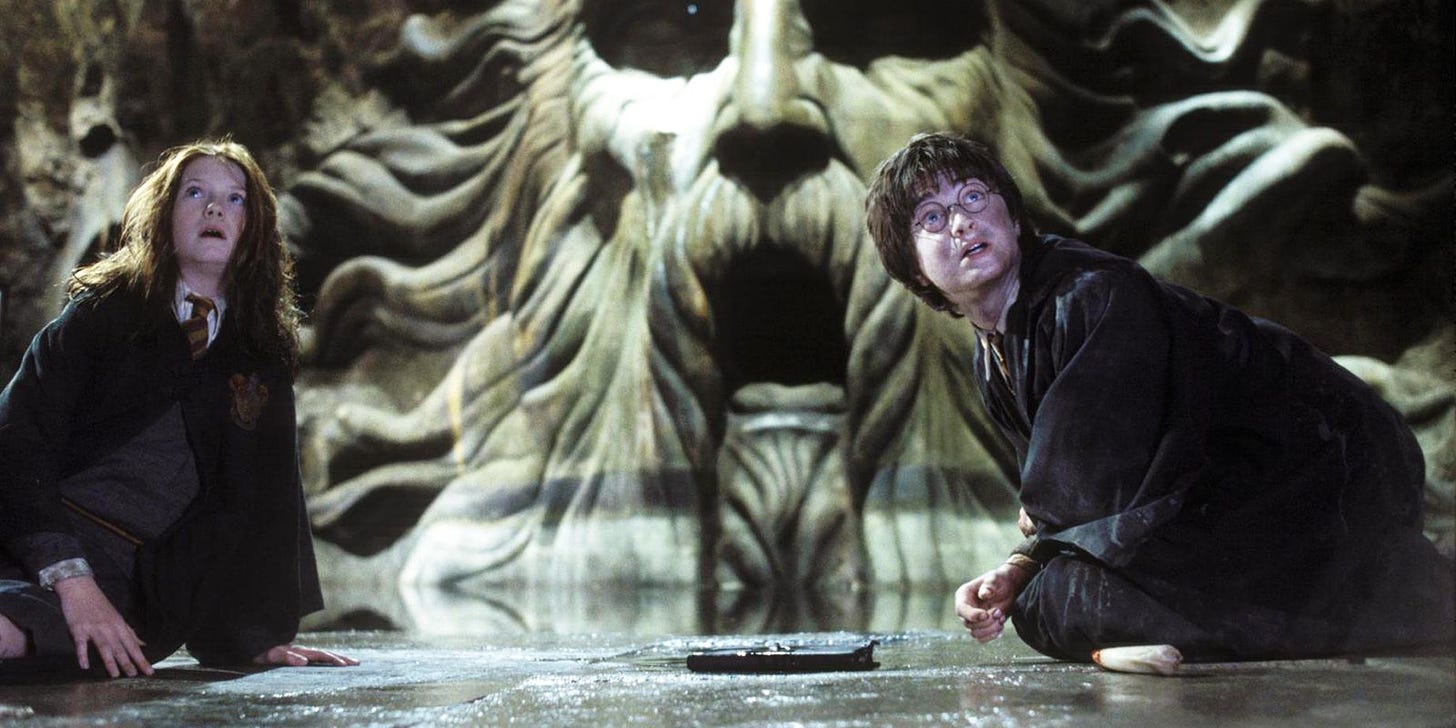J.K. Rowling's Framework For Harry's Darkest Moment Inside The Chamber Of Secrets
5 Steps To An Intense Turing Point
Hey there!
Today, we’re diving into the “Dark Night Of The Soul” beat.
If you’ve been following along our walk through the 15 Save The Cat beats, we just covered the All Is Lost moment.
And now, it’s time to take our hero into their darkest hour to get them ready for what comes next.
What Is The Dark Night Of The Soul?
The Dark Night Of the Soul is an intense low point in your protagonist’s journey.
It’s when they feel like giving up after a big failure or loss. But it’s also the moment where they find the strength to turn things around and keep going, even in the face of doubt—which ultimately helps your reader relate to the hero’s struggle.
Let’s look at how J.K. Rowling handles the Dark Night of the Soul in Harry Potter and the Chamber of Secrets.
Harry Potter’s Dark Night Inside The Lair Of The Basilisk
Here’s how it goes down:
Harry steps into the Chamber of Secrets.
It’s dark, creepy, and full of shadows. The whole place mirrors his fear and worry. Harry finds Ginny Weasley unconscious and near death. He feels a wave of guilt and fear—if only he’d figured things out sooner, maybe he could have saved her. Then, Tom Riddle (Voldemort’s younger self) reveals he’s been controlling Ginny and plans to kill Harry.
It’s a moment where Harry feels completely powerless.
Just when all hope seems gone, Fawkes the phoenix shows up with the Sorting Hat. Inside, Harry finds the sword of Gryffindor. It’s a small spark of hope, but it’s still up to him to use it. Harry decides to fight the Basilisk, even though he’s terrified. Armed with the sword, he takes on the monster, putting everything on the line.
Harry’s courage pays off.
He kills the Basilisk, destroys the diary, and saves Ginny. But this win only comes after he’s been through the wringer.
Rowling avoids the mistake of relying too much on external events. Instead, she balances the physical danger with Harry’s emotional journey. For Harry, it’s not just about surviving the Chamber—it’s about confronting his feelings of responsibility for Ginny’s situation. This internal conflict makes the stakes feel more personal and intense. And when Fawkes and the Sorting Hat appear, they don’t solve everything.
Harry still has to choose to fight. That choice is where his growth happens, making his victory feel earned.
Now let’s break down how you can apply these ideas to your own writing.
5 Steps To Write A “Dark Night Of The Soul” Scene Like J.K. Rowling
Here’s how you can use this framework in your story:
Step 1: Set The Scene With A Reflective Setting
Choose a setting that matches your character’s emotional state.
If they feel lost, place them in an empty, open area.
If they feel trapped, put them in a small, tight space.
If they feel overwhelmed, place them in a chaotic, noisy environment.
For example, if your character is struggling with loneliness, you could set the scene in an abandoned house or a quiet park at night. Use simple details like the cold air, the silence, or the shadows to show how the place affects your character.
Step 2: Make The Conflict Personal
Make the conflict hit close to home.
This is when your character faces something that matters deeply to them. If they’ve been trying to protect someone, now is the time when that person is in danger because of something the character did—or failed to do. For instance, if your character has been hiding a secret, this is the moment when it comes out and causes trouble with someone they care about.
The conflict should force your character to face their biggest fears or regrets.
Step 3: Push The Hero To The Brink
You want your character to feel like they’ve hit rock bottom.
You can build up to this by showing them face several setbacks, each one worse than the last. Maybe they’ve been fighting to keep going, but now they’re ready to give up. For example, in a thriller, your character might escape danger multiple times, only to finally get caught with no way out.
Show this despair through their actions, like giving up or making a desperate choice.
Step 4: Offer Hope
Just when things seem at their worst, give your character a small glimmer of hope.
But keep it subtle—it shouldn’t solve everything.
In a fantasy, this might be a hint from a mentor that suddenly makes sense.
In a crime thriller, it could be an overlooked piece of evidence that suddenly comes to light, giving the detective a new lead to follow when the case seemed cold.
In a historical drama, it might be a long-forgotten letter that surfaces, offering crucial information that could change the course of the protagonist's life.
This hope is just enough to keep them going, and they still have to work for it.
Step 5: Fight Back!
Finally, your character needs to decide to keep fighting, even if the odds are against them.
This decision is a turning point. In a mystery, the detective might decide to keep investigating, even after being kicked off the case. In a romance, the protagonist might choose to reach out to their love interest after a misunderstanding, despite fearing rejection.
The key is that your character isn’t giving up—they’re making an active choice to move forward.
The Dark Night Of The Soul Prompt
Here’s a prompt to help you write your own Dark Night Of The Soul scene:
Keep reading with a 7-day free trial
Subscribe to Fiction Writing With AI to keep reading this post and get 7 days of free access to the full post archives.






